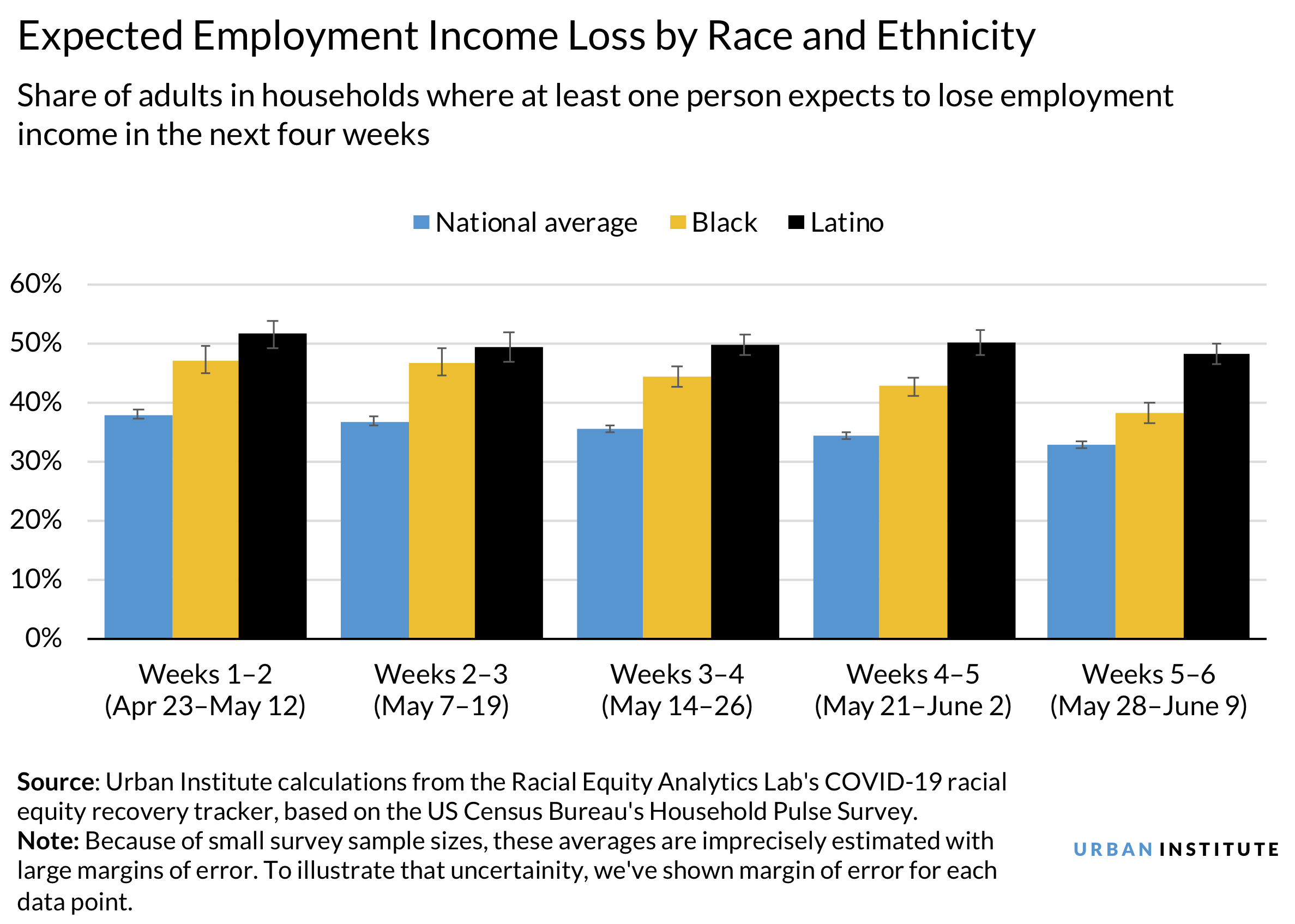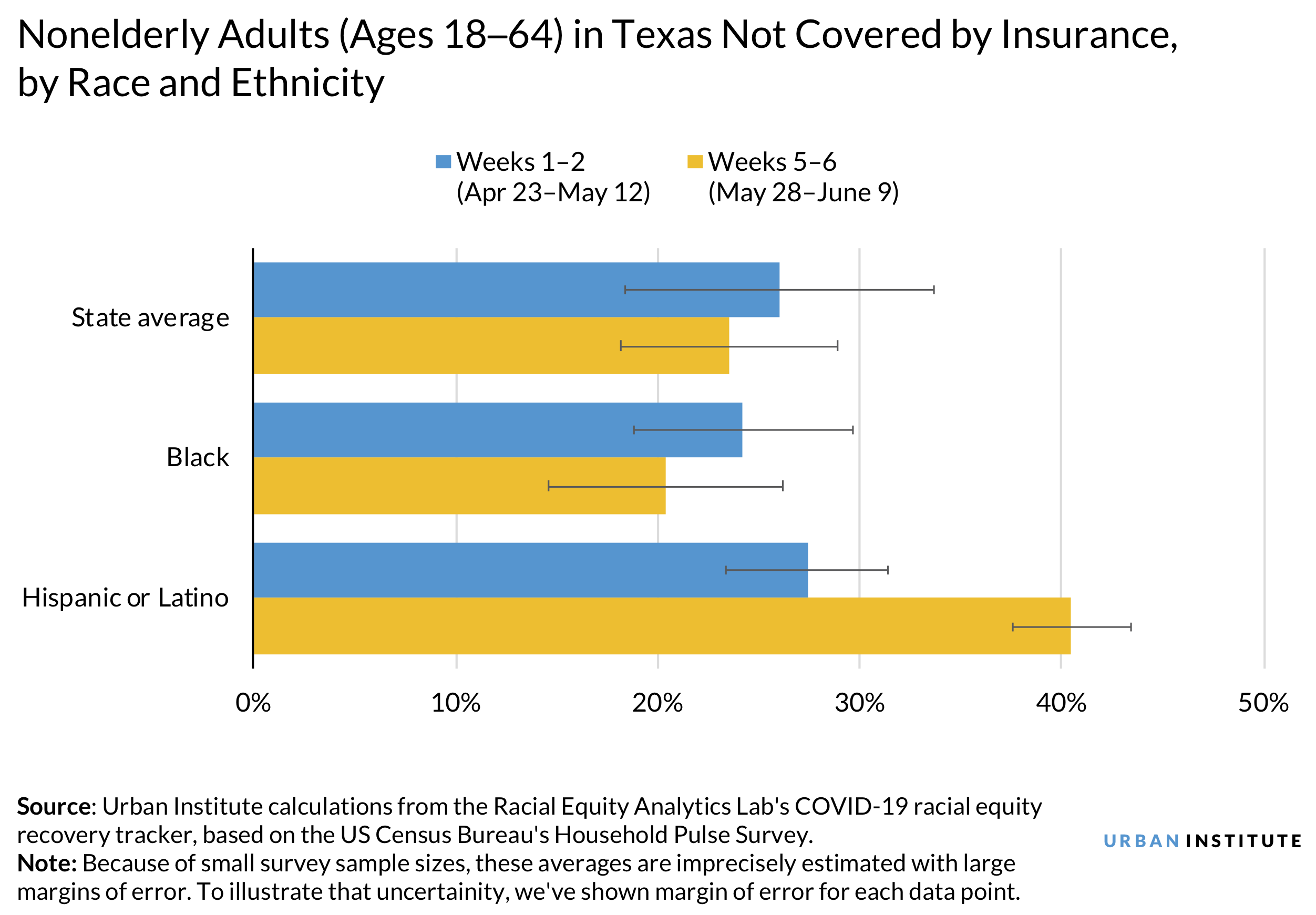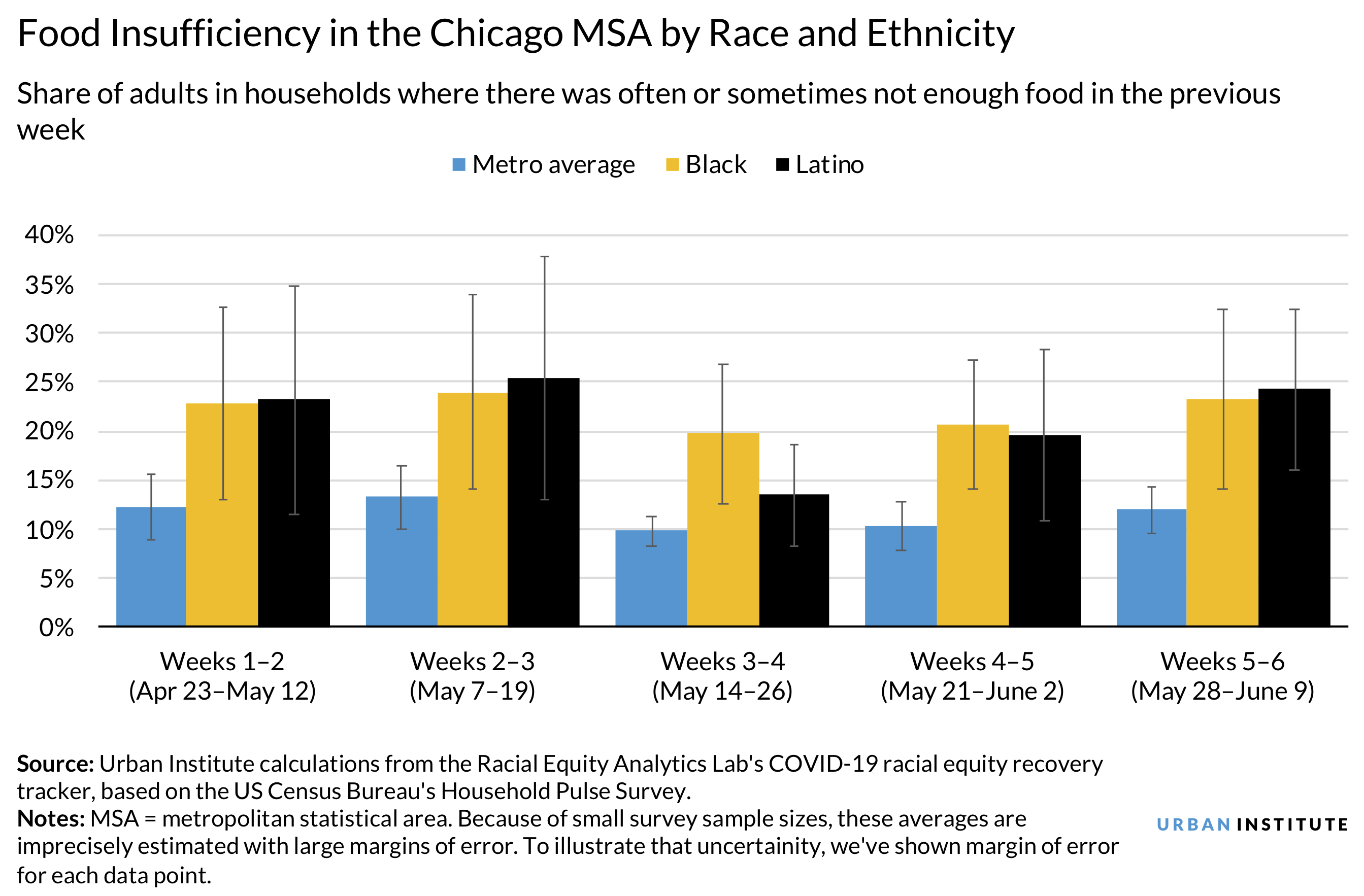
<p>Jessica Armijo distributes food and packages of donated goods to people in need outside the Pan Y Cafe in Chelsea, Massachusetts on April 14, 2020. (Photo by JOSEPH PREZIOSO/AFP via Getty Images)</p>
The COVID-19 pandemic and related shutdowns have led to the highest unemployment rate nationwide since the Great Depression, nearly a century ago. But the unemployment rate alone does not fully cover how people have been affected. Many are struggling to pay rents or mortgages, are having trouble affording food for themselves and their families, and have lost employer-sponsored health insurance during a still-growing public health crisis. These effects are not shouldered equally; evidence shows the pandemic has more severely affected people of color because of structural racism’s persistent influence.
Ensuring the recovery leads to more equitable economic and health outcomes without deepening entrenched racial and ethnic inequalities requires understanding current trends and how they differ by race and ethnicity. Policymakers, researchers, philanthropists, and practitioners are calling for timely data disaggregated by race and ethnicity because without these data, we risk developing policies and solutions that exacerbate inequities, rather than resolve them.
The Urban Institute has developed a tool drawing upon Federal Household Pulse Survey data to reveal how different communities are faring. From the data, we see that across trends and levels of geography, racial and ethnic disparities have remained, and in some cases grown, amid the recovery. To illustrate these disparities, we’ve highlighted three trends, one at the national, state, and metropolitan area levels, showing who has borne the pandemic’s burden in each.
Loss of employment income at the national level
In addition to the tens of millions of Americans who have lost jobs, many others retained their jobs but lost hours or were put on furlough, resulting in employment income losses. As of June 9, 48 percent of all adults lived in households where at least one person lost employment income since mid-March. For Black and Hispanic or Latino households, that share rose to 53 and 62 percent, respectively.

Even with the decreasing unemployment rate and states’ reopening measures, many still worry about their employment prospects. During the fifth and sixth weeks of the Household Pulse Survey, spanning May 28 to June 9, the survey found 33 percent of all adults live in households where they expect someone in the household to lose employment income in the upcoming weeks, down from 38 percent in the first and second weeks of data.
Although the share of Black adults in households with expected income loss also appears to be trending downward, their shares continue to be significantly higher than the national average. Hispanic or Latino adults expressed the highest rates of concern about their households’ near-term income stability, with nearly half (48 percent) living in households where at least one person expects to lose income.
Decreases in insurance coverage in Texas
By early May of this year, 23 percent of all nonelderly adults in Texas had no insurance coverage, compared with 24 percent of Black adults and 27 percent of Latino adults. Although those percentages differ from the most recent data available for the state, the pattern with regard to race and ethnicity is consistent with prior data.

But in mid-May, the Household Pulse Survey data appear to show growth in uninsurance rates for Hispanic and Latino adults, increasing more dramatically than the state average. Texas’s unemployment rate was 13.5 percent in April and 13.0 percent in May, suggesting up to 1.6 million people could have lost their insurance in recent months because of job loss. Recent state-level unemployment rates by race and ethnicity are not yet available, but Texas’s Hispanic and Latino population is substantially higher than the national average (39.7 percent compared with 18.5 percent nationally), and Hispanic and Latino unemployment remains the highest nationally. So it’s reasonable to expect they would be overrepresented among the Texas’s unemployed.
Though people have the option to buy medical insurance on private markets, it’s likely too expensive for families and households who’ve lost income. Texas is one of the states that did not extend Medicaid under the Affordable Care Act, meaning very few of the people who lost a job—approximately one-fifth—would be automatically eligible to receive Medicaid. Although immigrants who lack documentation cannot qualify for comprehensive, federally funded Medicaid coverage in any state, Texas also restricts Medicaid access to lawfully present immigrants who would have access in other states.
Even in families with eligible immigrants, concerns around public charge have led families with immigrant members to avoid applying for benefits. The negative effects of COVID-19 on Hispanic and Latino families—particularly families with immigrants—has likely driven the increase in uninsurance rates. Policymakers should pay close attention to this trend and consider options for increasing coverage, keeping the needs of families with immigrant members top of mind.
Food insufficiency in the Chicago metropolitan area
The COVID-19 crisis has deepened food insecurity and insufficiency for many Americans, particularly for people of color. A national survey from March and April found that more than twice as many Black and Hispanic adults were food insecure (37.4 percent and 39.3 percent, respectively) as white adults (17.6 percent). Both food insecurity and disparities in food insecurity vary substantially at the local level across the US. In 2017, Cook County, Illinois, had lower rates of food insecurity generally, but those rates were much higher among people of color, compared with the state and similar urban, high-cost counties across the country.

During the COVID-19 pandemic, data from the Household Pulse Survey show Black residents in the Chicago metropolitan area, which includes Cook County, are more likely to lack sufficient access to food in the past week. Although the sample makes precise estimates difficult, the food insufficiency rates consistently appear higher than the metro area’s average. Local leaders should examine what is constraining access to food for Black adults and families in Chicago.
As these trends and their disparate effects unfold, tracking which households are most affected could assist local, state, and federal policymakers in targeting their efforts and ensuring an equitable recovery for all Americans.
Let’s build a future where everyone, everywhere has the opportunity and power to thrive
Urban is more determined than ever to partner with changemakers to unlock opportunities that give people across the country a fair shot at reaching their fullest potential. Invest in Urban to power this type of work.